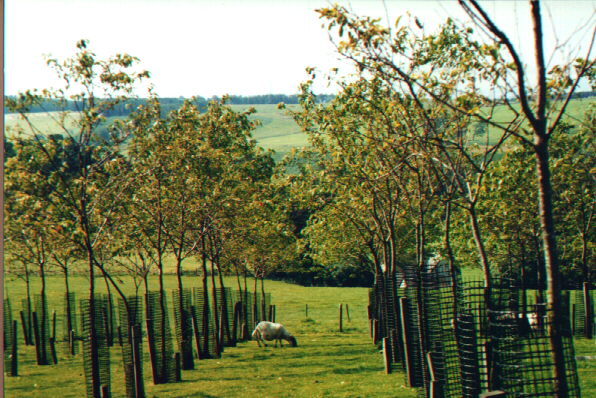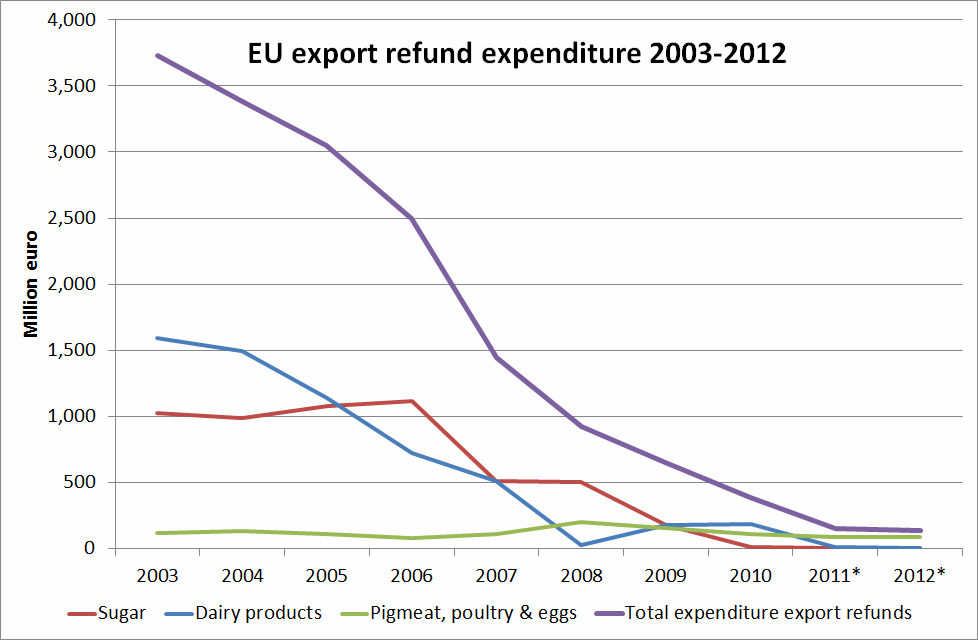Ireland took over the EU Presidency from 1 January 2013 and the Irish Minister for Agriculture, Food and the Marine, Simon Coveney, will chair the Council of Agricultural Ministers for the next six months. Coveney is an energetic Minister and the Irish have an experienced bunch of officials (see who’s who in the Irish delegation) who will do everything to ensure an agreement on CAP reform on their watch.
Securing an agreement under the Irish Presidency is conceivable. But I am going to argue that the institutional decision-making process between the Council and the Parliament, as well as the linkage with the Multi-annual Frinancial Framework (MFF) negotiations, will make it extraordinarily difficult, even assuming that the European Council will reach an agreement on the next MFF at its next meeting on 7-8 February 2013.… Read the rest
What potential agroforestry holds for the future CAP?
More than 80 policy makers, farmer’s representatives, NGOs and scientists got together on Wednesday this week in the European Parliament in Brussels to discuss the potential agroforestry holds for the future CAP. The event, entitled “Agroforestry: Trees for a Sustainable European Agriculture”, was organised and chaired by MEP Gaston Franco with the aim of promoting and supporting agroforestry at the European level. The programme (see agenda and presentations here) has brought together many speakers with various backgrounds and perspectives, resulting in a demonstration of a diverse and sophisticated picture of the field.
Agroforestry combines production and environmental protection in an innovative way, said Alain Canet – President of the French Agroforestry Association.… Read the rest
Danish Presidency CAP reform progress report
The Danish Presidency has submitted its report to the Agricultural Council on the progress achieved during the first half of 2012 on CAP reform. The report indicates the main amendments suggested by the Presidency to the Commission proposals and on which the Presidency has noted broad support from delegations. The overview report contains a list of working documents in the Annex prepared by the Commission which provide further explanations of its proposals.
In addition to the overview report which notes the positions taken in the Council on the various elements of the Commission’s proposals, the report is accompanied by a series of revised draft regulations which include the specific amendments proposed by the Presidency.… Read the rest
Are the CAP 2013 proposals a major reform?
The economist’s dilemma
Economists evaluating the Commission’s legislative proposals for the CAP post 2013 face a dilemma.
Economists work within a paradigm in which agriculture is an industry no different from any other, where markets by and large do a good job in allocating resources, and where the only justification for government intervention requires both the existence of market failures and demonstrating that governments have access to relevant information or resources which would allow them to address those market failures effectively.
This is an extremely powerful toolkit because it allows economists to distinguish between welfare-enhancing policy interventions and those which are largely about shifting resources and rents from one group to another (the distinction between PERTs and PESTs using Gordon Rausser’s terminology in his well-known 1982 AJAE paper).… Read the rest
End the use of export subsidies in the 2013 CAP review
A rather specific feature of the EU’s agricultural policy has been its use of export subsidies to maintain market prices on its domestic market in the past. While the EU was not the only country to make use of this policy mechanism, it accounted for around 90% of global expenditure on formal export subsidies (while arguing that other countries provide export support through more indirect means, such as through state monopoly marketing boards or through food aid).
EU use of export subsidies has fallen dramatically although they still have not disappeared. Total expenditure on export refunds fell from €3.8 billion in 2003 to a projected €139 million set aside in the EU’s draft 2012 budget (at their peak in the late 1980s and early 1990s, they amounted to €10 billion per year).… Read the rest
Agricultural Council discusses the single CMO
Danish Agricultural Minister Mette Gjerskov presided over her first Agricultural Council of the Danish Presidency with some dash and vigour last Monday 23 January. Her energy contrasted with the comments of some of her fellow Ministers in their first formal debate on the Commission’s single CMO legislative proposal, with a number of ministers seeking to roll back some previous reforms.
The Presidency structured the debate around two themes: the effectiveness of exceptional measures in case of market disturbances and crisis; and the proposed measures aiming at a more competitive and well-functioning food supply chain. The debate, which lasted just over two hours, can be followed here on video.… Read the rest
The CAP at Fifty
Today, the European Commission has launched the CAP@50 communication campaign to mark the fiftieth anniversary of the Common Agricultural Policy.
The Commission’s campaign wants to emphasise the CAP as a cornerstone of European integration, as a policy that has provided European citizens with half a century of food security and a living countryside. The year-long communication campaign includes an interactive website, an itinerant exhibition, audio-visual and printed materials, as well as a series of events in Brussels and the Member States.
No one wants to spoil a good party, but of course the overall balance sheet of the CAP remains controversial, to say the least.… Read the rest
More on the European Innovation Partnership for Agricultural Productivity and Sustainability (EIP-A)
One of the themes of this CAP reform is the need for a major increase in research and innovation to address the urgent social challenges of providing more food in an environment of increasing land use competition and pressures on resources and the environment. Whether the Commission’s proposals actually deliver on this objective is still an open question.
Three instruments are envisaged in the Commission’s CAP reform proposals to support this agenda:
• Continued support in the Rural Development Pillar 2 for investment in physical assets, business development, cooperation for the development of new products, processes and technologies in the agriculture and food sector as well as a revamping of farmer advisory services to broaden their scope and improve their effectiveness.… Read the rest
Commission projects unchanged sugar market following quota elimination
Further details on the Commission’s expectations for the EU sugar market following the end of sugar quotas in 2015 are contained in its market outlook to 2020 publication published last month.
This medium-term outlook for the EU sugar market is based on a status quo assumption for agricultural and trade policy. The Commission notes that its CAP towards 2020 legislative proposal confirms the existing provisions on expiry of the regime after the marketing year 2014/15. Thus it argues that the policy assumption on the expiry of sugar quotas is in conformity with existing legislation.
In my own review of the legislative proposals I argued that the Commission’s decision not to propose an extension to the sugar quota regime after 2014-15 is a part of the 2013 CAP reform, on the grounds that this was the first time that the Commission had made its intentions clear.… Read the rest
The challenge of moving to the regional model
The Commission’s legislative proposals for the CAP post 2013 contain two measures to harmonise direct payments per ha across farms: (i) a move to more uniform payments per hectare across member states, and (ii) a move to more uniform payments per hectare within member states by moving from the historical to the regional model of payments. While both measures are prompted by the desire to have a more uniform distribution of payments per hectare across EU farms, it is useful to keep the measures distinct. For that reason, it is helpful to talk about the convergence of payments across member states, and the flattening of payments within a member state.… Read the rest


